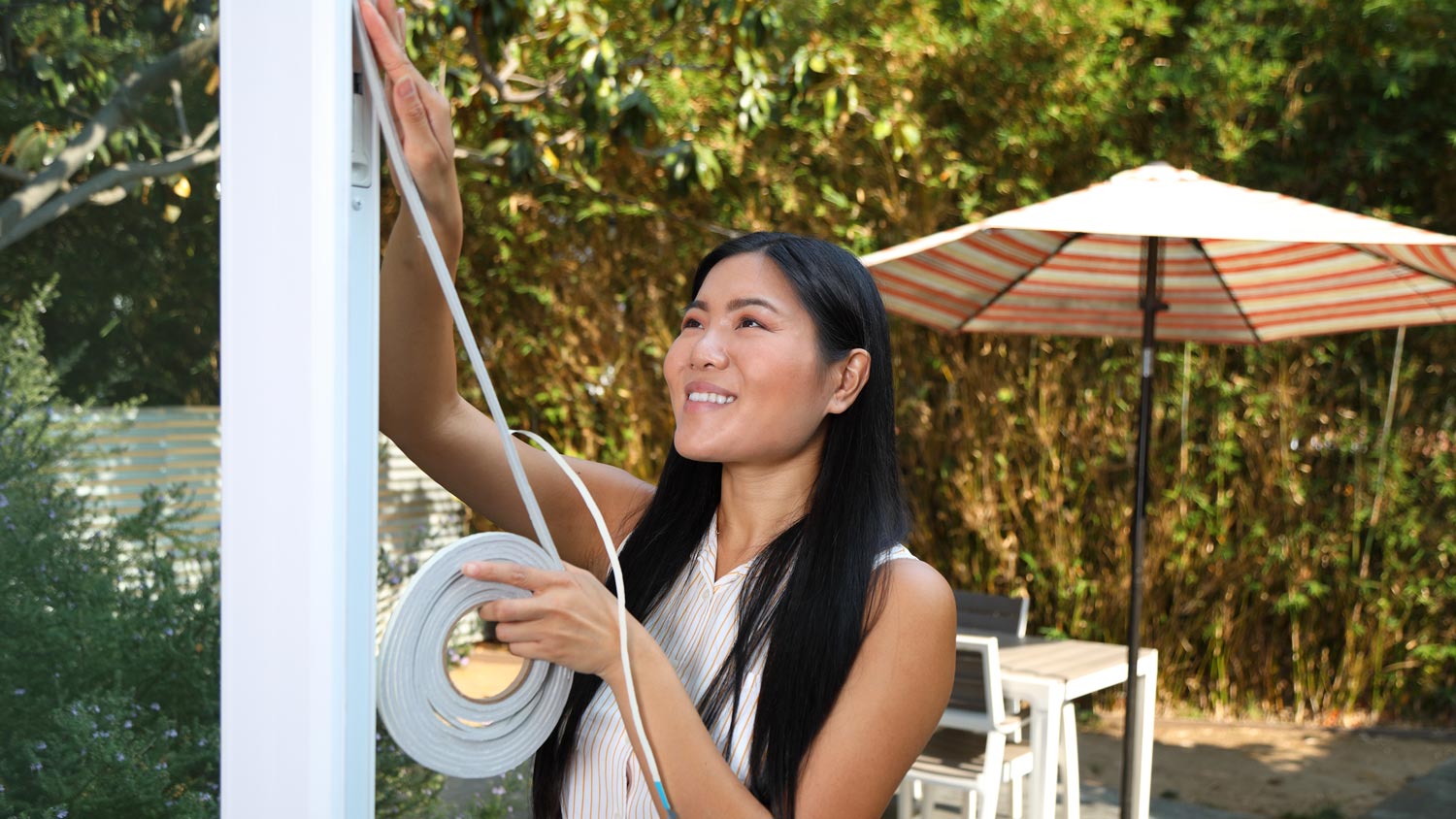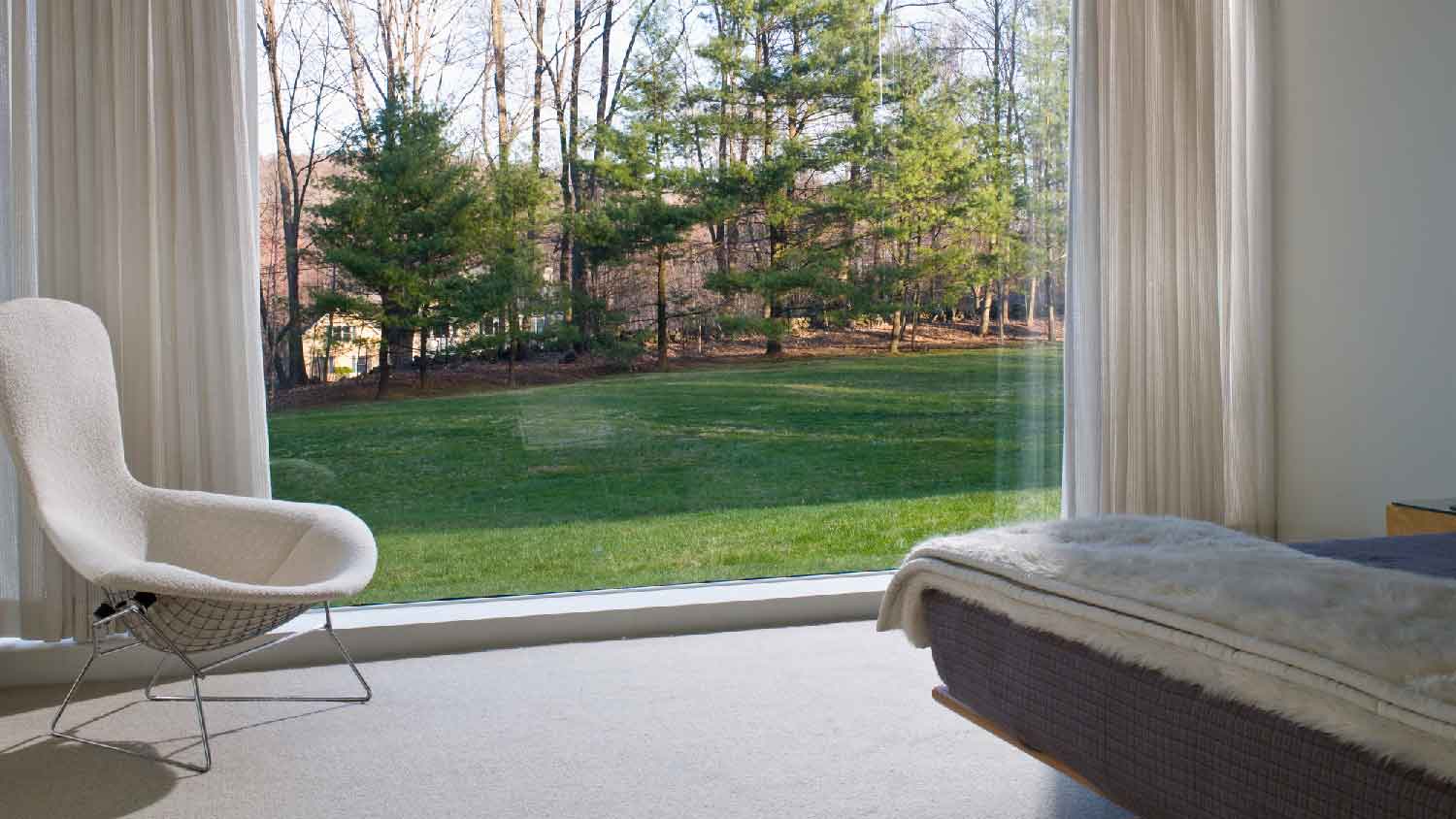
If you're hoping to add a touch of timeless style to your windows, take a look at the cost of stained glass windows and what affects installation costs.
Lounge in the sun


Bay windows can increase property value by adding more livable spaces, natural light, and ventilation.
Bay windows have an average return of 70% to 80%.
On average, a new bay window costs $2,500 with professional installation.
The cost for bay windows is affected by window type and size, window treatment, installation difficulty, and additional design elements.
Bay windows are more than just an addition. It’s a whole lifestyle. A properly constructed bay window increases your property value by adding livable square footage, improving aesthetics, and allowing more natural light and ventilation.
A bay window can easily add 10 extra feet to any room. Depending on the type and style, some may add even more square footage. Bay windows have an average return on investment (ROI) of 70% to 80%, which is higher than regular window replacement.
There are three types of bay windows: angled, box, and garden. Angled bay windows are the most common type, featuring a wide, center window and two flanks at 30, 45, or 60 degrees. Box bay windows, also known as square bay windows, extend a rectangular window perpendicularly out of the walls. Garden bay windows are box bay windows with a glass roof that functions as a mini greenhouse.
| Type | Description |
|---|---|
| Angled Bay Window | Most common. Wide center with angled side flanks. |
| Box Bay Window (Square Bay Window) | Project a rectangular window straight out of the wall at 90 degrees. |
| Garden Bay Window (Greenhouse Bay Window) | Box bay window with a glass roof, often used in kitchens as a mini greenhouse. |

Adding a bay window comes with many benefits, but also certain drawbacks. Generally, bay windows add a considerable amount of extra living or functional space, increase natural light, and can bring an elevated aesthetic to your home. Like all new windows, adding a bay window can provide quite a boost to your property’s value.
However, the high initial cost of adding a bay window could be intimidating for some. Also, bay windows can increase solar heat gain, adding more burden to your cooling system. Therefore, if you live somewhere with hot summers and direct sunlight, consider using an energy-efficient window to offset the solar gain.
Bay windows are also highly demanding when it comes to installation, and poor craftsmanship can lead to major problems and safety hazards. Therefore, be sure to hire a professional window installation company if you want to add a bay window to your home.
| Pros | Cons |
|---|---|
| More natural light | Increased solar heat gain |
| Additional space | Some types might be difficult to find hardware for installation and repair |
| Increased ventilation | Poor installation can be devastating |
| Added property value | High installation cost |
Adding a bay window to your home costs an average of $2,500 but could easily reach $5,000 depending on the size, type, material, and placement of the bay window, as well as the kind of glass you use. Additional design factors can also affect your cost. For example, a garden bay window tends to cost more due to the glass room and its greenhouse functionality.
Window treatment cost is another key factor impacting the final cost of your bay window. Window glazing would cost extra. If you want to add blinds, shades, or more stylish options like plantation shutters, the price can vary from an extra few hundred to a few thousand.
Finally, different companies may charge different rates based on their experience and service area.

A bay window can increase your home’s property value. However, don’t just add a bay window as an investment before selling your home. Bay windows are pleasant to the eye and unlock many new lifestyle options. Imagine adding a window seat for your cat to the window so you can read in the sun with your fur baby, or start a mini vegetable garden in your kitchen. The true value of a bay window is the joy, possibility, and freedom it brings with additional space and natural light.
Assess the wall to make sure it’s strong enough to hold the bay window before getting to the construction portion and obtain any necessary permits from your local municipality. Since adding a bay window is highly technical, you should hire a pro for the job.
Most companies construct the bay window separately and then replace your existing window with the completed product. This allows them to remove the existing window and expand the opening in your wall when the new window is ready to go in. It also lets the company modify the existing opening and build the bay window simultaneously, significantly reducing the project’s time consumption.
Home is the most important place on earth, which is why Angi has helped more than 150 million homeowners transform their houses into homes they adore. To help homeowners maximize the value of their investments, we gather ROI data from reputable sources, including industry reports, real estate studies, and interviews with market experts. We calculate the average resale value for projects by multiplying the ROI against the project’s average cost according to our cost data, which is sourced from thousands of real Angi customers.
Want to help us improve our data? Send us a recent project quote or home appraisal value to [email protected]. Quotes and personal information will not be shared publicly.
He came back and fixed the window. A few months later I was cleaning the window and the top window fell out. They are a scam company.
The installation of our four new windows was so easy! They showed up on time and installed the windows perfectly. We love the quality of the windows. They checked every window with us to make sure it worked properly. We will definitely hire them again!
Window Genie of Loudoun did excellent work in pressure washing our home and cleaning the screens and exterior of the windows. They arrived on time and were meticulous in the process. The pricing is very reasonable compared with another highly rated company we have used in the past. Tom...
Excellent job. Windows and doors cleaned inside and out. Sparkling!
On time, friendly, reasonable price and the replacement was quick and neat. The office person very friendly and followed up as she told me she would. Much, much, much cheaper than buying a new replacement window. The window looks fabulous.
I was very pleased with the window cleaning team. Arrived as scheduled & my windows sparkle inside & outside! I will have them again! Outstanding job! Thank you very much!
From average costs to expert advice, get all the answers you need to get your job done.

If you're hoping to add a touch of timeless style to your windows, take a look at the cost of stained glass windows and what affects installation costs.

Garden windows can be a great addition to your kitchen, adding light and a place to grow plants. Costs depend on material, size, and customization—learn how much you can expect to pay.

Find out the cost to replace weatherstripping. Learn about material and labor costs, cost-saving tips, and what impacts your total price.

Want to know how long vinyl windows last? Learn the average lifespan of vinyl windows and the core factors that affect their performance over time.

Knowing how to insulate windows can keep you cool in the summer and warm in the winter. Suffice to say, it’s an important skill to have. Learn more here.

Do you need impact windows to protect your home in the event of a hurricane? Find out how much impact windows cost, including the windows themselves and the labor to install them.